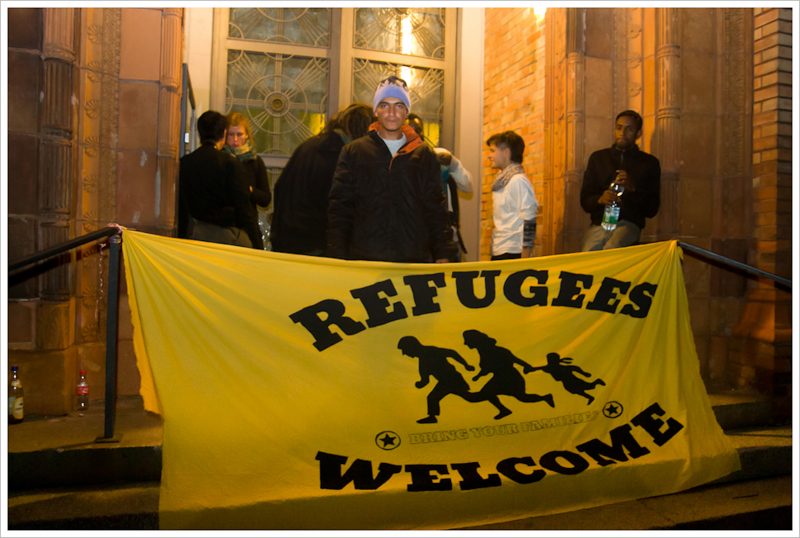Project Details
Welcome and Integration for Refugees in Europe

Short Description and Goal
- The project Welcome and Integration Process for Refugees in Europe (WIR project) covers the most important and challenging theme that nowadays the European Union and its members are facing: the migration phenomenon and the welcoming and integration of refugees. The project unfolded in 9 events which were contributed to the exchange of knowledge among the participated municipalities
Detailed Description
The “Welcome and Integration for Refugees” project was set up in order to cope with the common challenges we face on a European level as well as learn and share from each other how to best integrate and welcome refugees into our societies. The project partners come from all parts of Europe – from North to South and East to West – and have very different experiences and approaches to the refugee situation. This extensive transnationality allows for great learning opportunities.
Moreover, the project was also thought to be a complement to the EU discussions on the creation of the European Agenda for Migration. Whereas the agenda mainly focuses on the national and transnational aspects of migration such as relocation, border controls and asylum processes, this project instead pays attention to local approaches to welcoming and integration of refugees.
The project’s specific objectives are to:
- Increase knowledge about the EU strategy and approach towards refugees and asylum seekers based on the European Agenda for Migration
- Increase knowledge about the processes of welcoming and integrating refugees in the partnering countries
- Exchange best practices and compare European experiences on focus themes like, education and schooling, getting ready to work, cooperation with civil society and unaccompanied minors
- Transfer or adapt new models for welcoming and integrating refugees
- Create a tool explaining to the citizens the different approaches at work in the different EU countries.
Learnings
Summary from ” HANDBOOK FOR WELCOME AND INTEGRATION OF REFUGEES IN EUROPE”
https://www.wirproject.eu/wp-content/uploads/2019/12/WIR_HANDBOOK_191119.pdf
The experience of the WIR project has come to an end after two years of activities. When the project idea was initiated in early 2017, the partners were hopeful for a common EU approach on migration and asylum and saw the project as a way to enhance EU policy. However, in 2019 we still haven’t reached a final agreement concerning a common EU framework for migration. Only some parts have been agreed and implemented, whereas other parts are still being deliberated or even stalled at the EU level.
Although it has sometimes been hard to find a common approach on migration and asylum for the legislators in Brussels, the WIR project has been a success in local EU cooperation.
Ten partners from seven different countries met at nine transnational meetings and discussed the best ways to welcome and integrate refugees into our societies. The meetings involved stakeholders, civil society, politicians, and refugees themselves and about 350 people are estimated to have had a part in the project’s development. Even more people are expected to be reached by the project as the results are disseminated.
The work of the project resulted in the gathering of 14 best practices from all the partners. The practices have come from North, South, East and West and everyone has contributed with important lessons and ideas. Although the situation looks different in every Member State, there are some lessons that seem to be universal in regards to the welcoming and integration of refugees and that should be kept in mind when transferring the practices presented in this Handbook. To begin with, there needs to be a mix of different efforts on different fronts in order to achieve successful integration. A holistic framework is key since the situation is highly complex. In relation to this, it is also important to emphasize that everyone needs to be involved in the process, directly or indirectly. Public authorities, companies, civil society, neighbors and friends, all need to be a part of the development in order to create inclusive and open societies that can continue to prosper and develop. After all, it is all about integration – and not assimilation – which implies that we have to meet each other somewhere in the middle. Moreover, integration efforts should start as early as possible, either from the first day the person is granted asylum or even earlier. This will speed up integration and makes the refugee able to integrate into the job market and society in general as quickly as possible. Lastly, in order to achieve inclusive societies and successful integration we need to see the refugees’ potential and capacity. Instead of looking at the situation in Europe as a crisis, we need to see it as an opportunity. The refugees can contribute to and eNOich our societies if we choose to embrace this development.
Initiated by
- Europe for Citizens program
Initiators are
Funded by
• Federal or State Funds
Project Website(s)
Social Media Link(s)
Project Topics
Level / Project Complexity /
Participating Cities
- Vänersborg
- Daugavpils
Sizes of Participating Cities
• 500.000 - 1,5 Mio
Participating Countries
- Sweden
- Latvia
- Italy
- Austria
- Germany
- Finland
